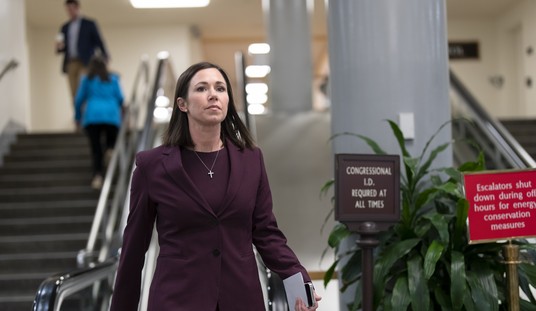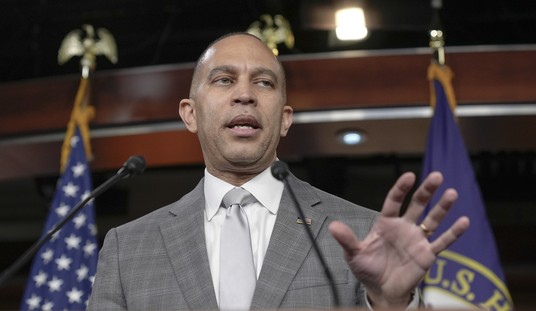Yesterday, the media was agog with glee over reports that CBO is projecting an annual deficit “below $1 trillion for the first time in four years.”
How did they arrive at that conclusion?
This projection was extrapolated from the Treasury Department’s report of the first two months of the fiscal year budget, which, as explained by the CBO’s monthly budget review, pegs the current deficit at $236 billion — $55 billion less than at this time last year. The media is conflating this monthly report with an outdated long-term CBO budget outlook, which projects only a $973 billion deficit for FY 2012.
You might be wondering how we can achieve such a reduction when there are little or no spending cuts. After all, even the infinitesimal $6.6 billion in discretionary cuts will be cancelled out by additional emergency spending. Additionally, mandatory spending programs will only continue to grow this year. Yes – revenues are expected to climb; they have increased 7.1% from last year, but that would only reduce the deficit by $163 billion, when extrapolated on an annual basis.
Well, like most optimistic economic and budget projections, this one is garbage in, garbage out. It also involves shoddy work on the part of the media.
First, the CBO report that media outlets are referencing makes it clear why outlays for FY 2012 are sharply down from the previous year at this time – and it’s not because of budget austerity. Most of the reductions come from an accounting shift. Most federal entitlement payments are sent out on the first of the month; however, this year, October 1 (which was also the first day of the fiscal year) fell out on a Saturday. As such, $31 billion of October’s payments (accounting for 55% of this year’s “deficit reduction” and 92% of outlay reduction) went out on the last day of September, thereby saving the new fiscal year from the extra accounting burden. When adjusting for the payment shift, CBO actually estimates that most areas of mandatory spending increased from the first two months of FY 2011, while defense spending has decreased. Consequently, overall spending has been virtually unchanged from this point in time last year.
Second, the CBO revenue estimate does not include the inevitable payroll tax cut extension, which will reduce revenues by $120 billion. The extrapolation of outlays does not include the extensions of unemployment benefits and Medicare doc fix. These measures will add anywhere from $55-75 billion in outlays. Even though these costs will be incurred over calendar year 2012 (which defers some of the burden to the first three months of FY 2013), it is safe to assume that roughly three-quarters of the cost will be actualized during fiscal year 2012.
Third, the $973 billion deficit figure that the media is throwing around comes from an outdated CBO report in August. That CBO report projected that spending would be virtually unchanged at $3.6 trillion, while revenues would climb from $2.31 trillion to $2.65 trillion during 2012. Everyone agree that barring an unforeseeable downturn in the economy, revenues will be higher this year than during the previous few years. However, as noted above, their estimate is probably overstating the revenue spike by a factor of two. The CBO revenue figures are predicated on unrealistic GDP growth during the last quarter of 2011 (Q1 of FY 2012) and 2012. They also don’t include the annual AMT patch and tax extenders, which could reduce revenues by up to another $100 billion.
Therefore, is clear that the $973 billion annual figure is not a logical extrapolation of the Treasury reports from the first two months. The November CBO monthly budget review is a clear repudiation of its August budget outlook. Even at the time, CBO noted that their outlook was outdated, and had they factored in recent economic news, it would have “led CBO to temper its near-term forecast for economic growth.” The $973 billion figure is old news, and it is predicated on unrealistic revenues, an understatement of mandatory outlays, and the assumption that several important temporary tax and spending provisions will not be extended. This year’s deficit will be roughly the same as last year’s $1.3 trillion.
Another important factoid from this year’s preliminary deficit figures is that payments for interest on the debt totaled $45 billion, up 19.5% from the same period a year ago. As long as we fail to cut welfare and reform entitlement programs, interest on the debt alone will cripple our economy, once rates begin to rise back to their historical norms.
If I were Mitt Romney, I would bet you a trillion dollars that the deficit will top $1 trillion this year. It’s going to take a lot more than a few accounting gimmicks and unrealistic assumptions to cure our budget ailment that has been induced by an overbearing federal government.














Join the conversation as a VIP Member